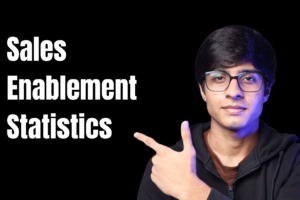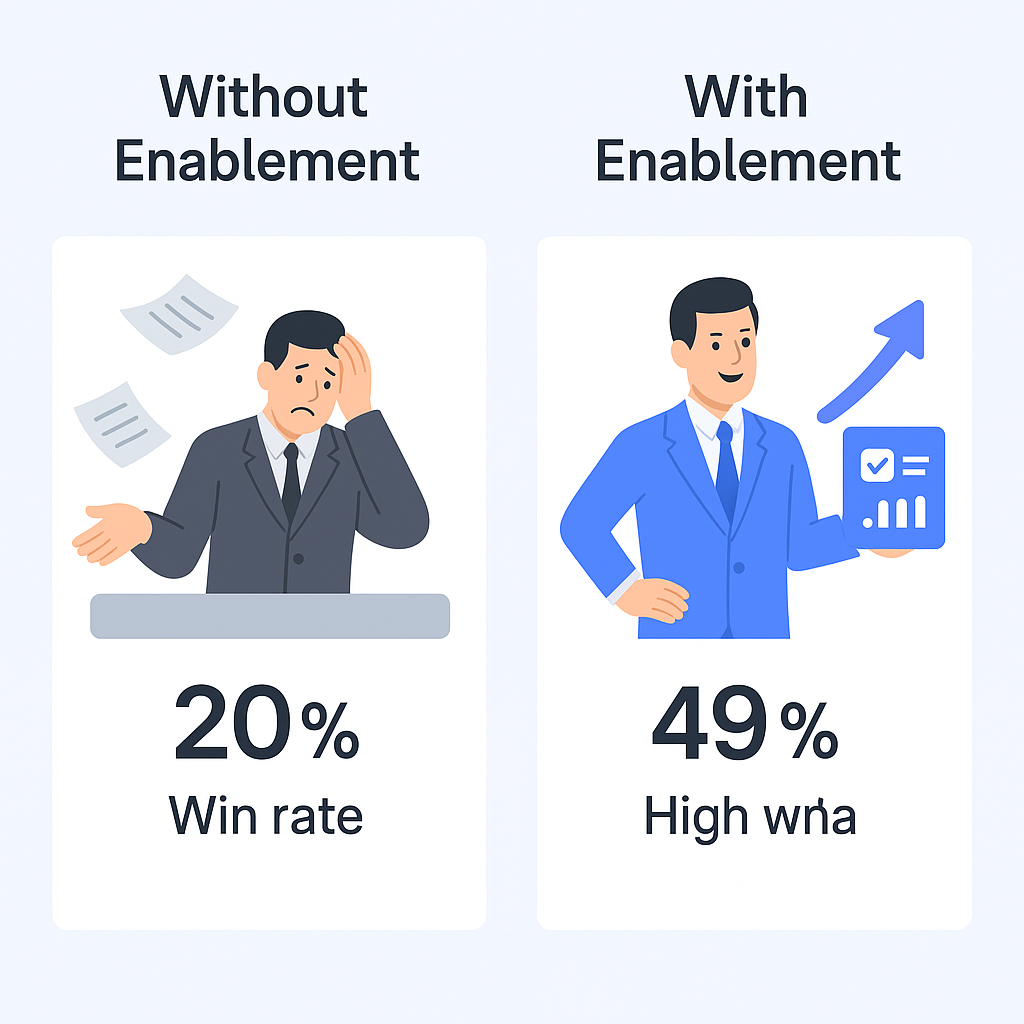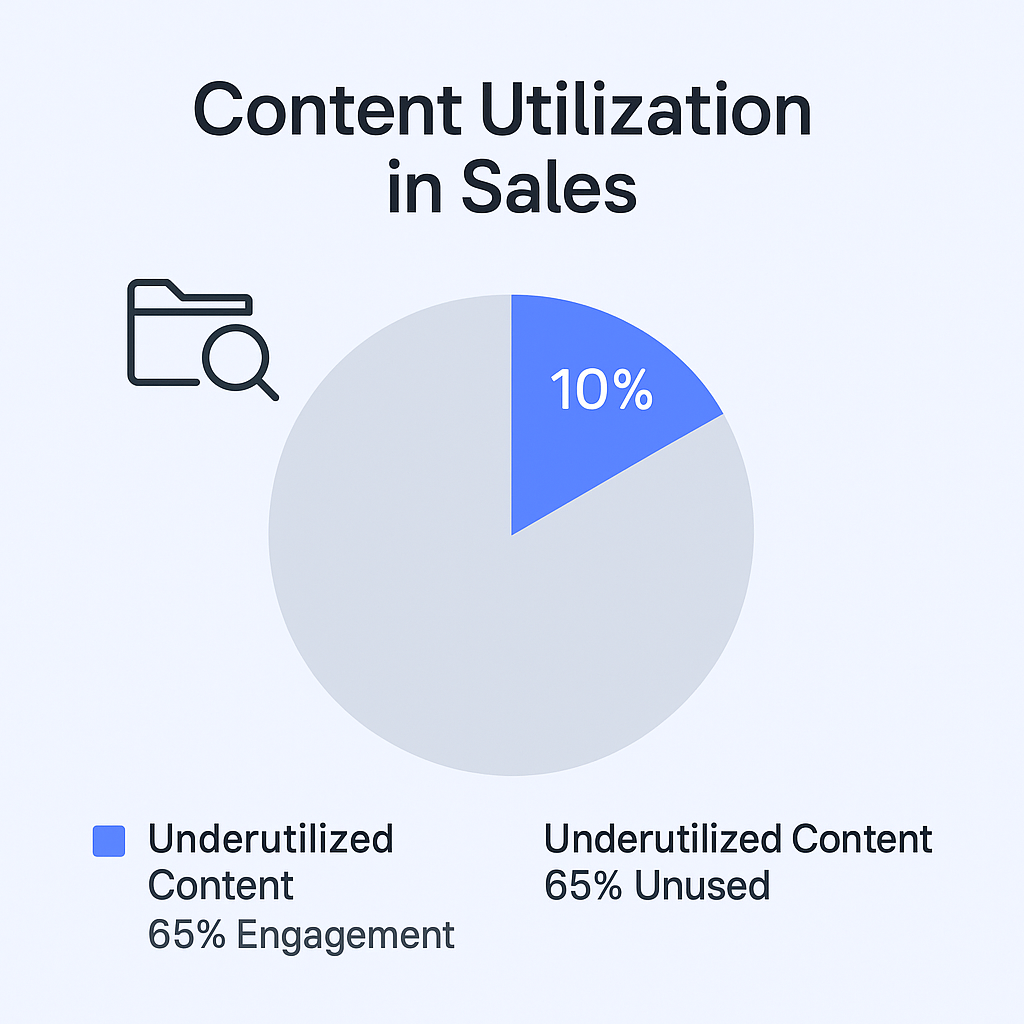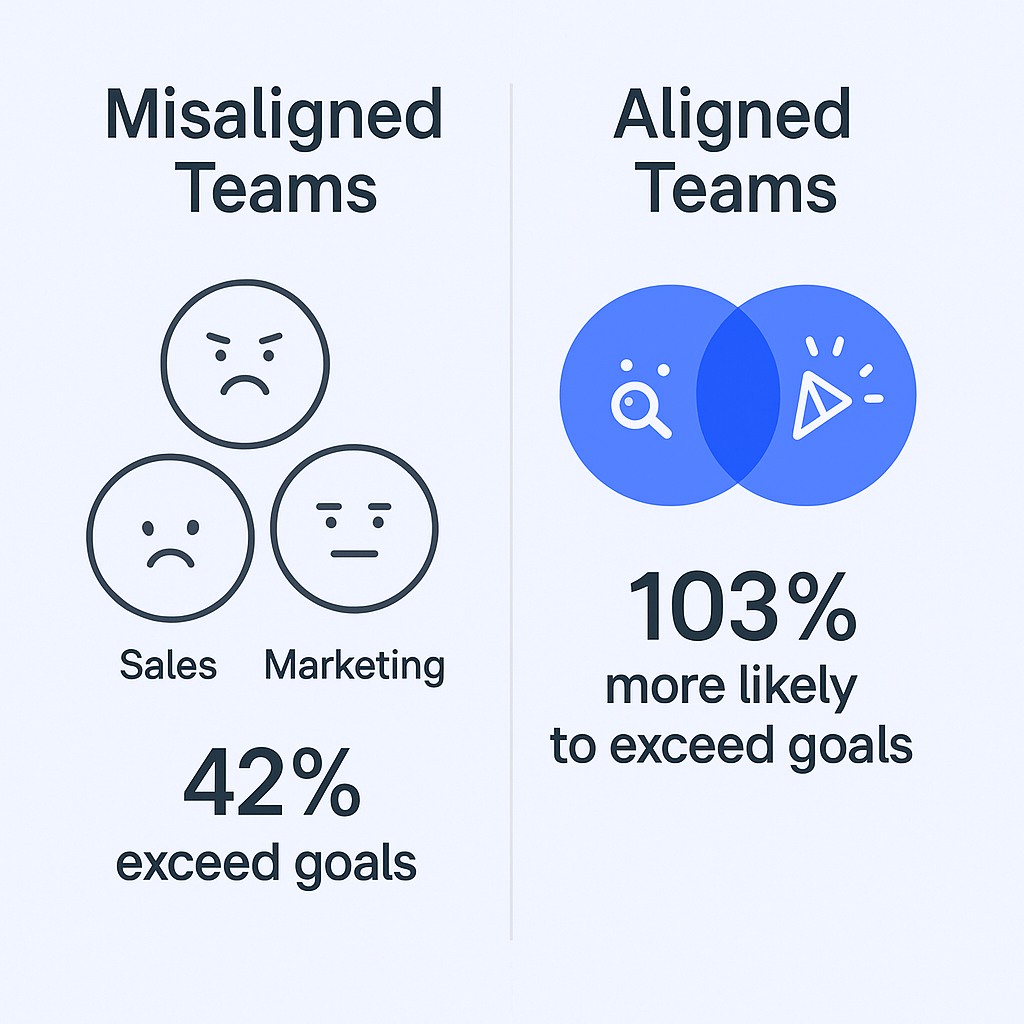
Sales Enablement Statistics 2024/2025: The Data Top Sales Teams Use to Close 49% More Deals
- Sophie Ricci
- Views : 28,543
Table of Contents
Sales Enablement Statistics
- Most sales professionals spend only 35% of their time actually selling, with the rest lost to administrative tasks
- Organizations with formal sales enablement programs achieve a 49% higher win rate on forecasted deals
- Sales enablement adoption has seen 343% growth over the last five years across organizations
- By 2023, 90% of organizations reported having a dedicated sales enablement function in place
- Organizations that maintain enablement processes for more than two years report a 7-percentage-point improvement in win rates
- Sales enablement cuts onboarding time by 40-50%, helping new reps start contributing to revenue faster
- 50% of all prospect engagement comes from just 10% of sales enablement content in content libraries
- 65% of company content goes completely unused by sales teams, representing massive wasted resources
- 84% of sales executives cite content search and utilization as their top productivity improvement area
- Sales professionals at aligned companies are 103% more likely to exceed their goals when sales and marketing work together
- 61% of companies with defined sales enablement report good alignment between sales and marketing teams
- Sales enablement tools save reps an average of 13 hours per week through automation and efficiency
- Sales reps using mobile selling tools sell 26% more than those who don’t use mobile capabilities
- 50% to 90% of the B2B buying journey happens before a prospect even talks to a sales rep
84% of buyers want sales reps to act as trusted advisors who bring new insights, not just pitch product
Here’s the truth: most sales professionals spend only 35% of their time actually selling.
The rest? Lost to admin tasks, hunting for content, and updating CRMs.
But here’s what changes everything: organizations with formal sales enablement programs achieve a 49% higher win rate on forecasted deals. That’s not a small bump—that’s the difference between crushing your quota and wondering where the month went.

If you’re spending more time searching for content than talking to prospects, this data will show you exactly why enablement isn’t optional anymore. Let’s dive into the numbers that matter.
Sales Enablement Statistics
Sales enablement has exploded over the last five years. We’re talking 343% growth in adoption, and by 2023, 90% of organizations reported having a dedicated enablement function.
Why the rush? Because the ROI is undeniable.
Companies with structured enablement don’t just see marginal improvements—they see 49% higher win rates on forecasted deals compared to those flying without a system. That’s the kind of advantage that turns average performers into quota crushers.
But here’s the catch: success doesn’t happen overnight. Organizations that stick with their enablement processes for more than two years report a 7-percentage-point improvement in win rates. Think of it like compound interest for your sales process—the longer you commit, the bigger the returns.
🎯 Target Decision-Makers Directly
Skip cold calls. Our LinkedIn campaigns connect you with C-suite buyers actively seeking solutions.
The pipeline impact is equally impressive. Sales enablement cuts onboarding time by 40-50%, meaning new reps start contributing faster. Top organizations report 25% increases in pipeline conversion rates and 22% increases in pipeline size. For anyone building pipeline, that’s jet fuel.
Sales Content and Training Statistics
Here’s a wild statistic: 50% of all prospect engagement comes from just 10% of sales enablement content.

Let that sink in. Half your value is driven by a tiny fraction of your content library. Meanwhile, 65% of company content goes completely unused by sales teams.
This creates a massive gap. While 85% of sales managers believe they’re providing enough collateral, only 15% of salespeople are satisfied with what they actually get. The content exists—it’s just not the right content, or it’s buried where no one can find it.
The productivity drain is real. 84% of sales executives cite content search and utilization as their top productivity improvement area. When reps can’t find what they need, they waste hours creating their own materials. In fact, 46% of sellers spend too much time creating or personalizing content.
This is where AI becomes essential. Instead of burning hours on manual customization, smart teams are using AI to handle research, personalization, and content delivery—reclaiming that time for actual selling.
Sales-Marketing Alignment Statistics
Want to know the single biggest controllable factor for crushing your revenue goals?
Alignment between sales and marketing.
Sales professionals at companies where sales and marketing are aligned are 103% more likely to exceed their goals. That’s not a typo—aligned departments effectively double your chances of overperformance.

Why does this work? Simple: alignment creates better content and higher quality leads. Less time wasted chasing bad-fit prospects. More time closing deals with buyers who actually need what you’re selling.
The enablement function acts as the bridge. 61% of companies with defined sales enablement report good alignment between sales and marketing, compared to only 42% without the function. When both teams work from the same playbook with shared goals, everyone wins.
Technology plays a critical role here. 78% of sales leaders say their CRM effectively improves alignment between sales and marketing teams. Shared data platforms create a single source of truth, eliminating the finger-pointing and confusion that kills deals.
📈 103% Higher Goal Achievement
Perfect sales-marketing alignment starts with qualified LinkedIn leads. We handle targeting, messaging, and pipeline scaling.
Sales Reps’ Productivity Statistics
Remember that 35% selling time stat from the intro? Let’s break down where the other 65% goes—and how to get it back.
The average sales rep spends only 35.2% of their time actively selling. The rest disappears into administrative tasks, CRM updates, and content searches. That’s a massive productivity drain.
But here’s the good news: sales enablement tools save reps an average of 13 hours per week. By automating research, content management, and routine tasks, these tools essentially double the time available for high-value activities like prospecting and closing.
The data backs this up. Sales reps using mobile selling tools sell 26% more than those who don’t. When you remove friction and make resources accessible anywhere, productivity jumps.
For pipeline builders, the impact is even more dramatic. Top sellers spend about 6 hours per week on prospect research—time that AI can now compress into minutes. AI-powered tools handle lead enrichment, draft personalized outreach, and optimize timing, letting reps focus on qualified human engagement.
⚡ Reclaim 13 Hours Weekly
Stop hunting prospects. Our automated LinkedIn campaigns deliver warm leads while you focus on closing.
And it works. Personalized cold outreach yields 10% higher open rates, and AI ensures that personalization happens at scale without burning out your team.
Looking ahead to 2025, 90% of companies have either implemented AI or plan to this year. This isn’t experimental anymore—it’s how modern revenue teams operate.
Consumer Experience Statistics
Your buyers have changed. Your selling approach needs to match.
Here’s the reality: 50% to 90% of the B2B buying journey happens before a prospect even talks to a sales rep. By the time they reach out, they’ve already done their homework. They don’t need information—they need expertise.
This shift makes every interaction critical. Buyers often shortlist only three vendors to evaluate deeply. If your conversation isn’t consultative, personalized, and valuable, you’re out.
What do buyers expect? 84% want sales reps to act as trusted advisors who bring new insights. They’re not looking for pitch decks—they’re looking for strategic partners who understand their business.
But there’s a gap. 73% of buyers say most sales interactions feel transactional. When sellers fail to provide real value, buyers notice. And they’re willing to pay a premium for better experiences—16% more for great B2B experiences, to be exact.
Personalization is the differentiator. B2B brands that personalize web experiences see an 80% increase in conversion rates. And personalized emails deliver six times higher transaction rates in B2B. The message is clear: generic outreach doesn’t cut it anymore.
This is where enablement earns its keep—by equipping reps with the content, training, and tools to deliver the consultative, personalized experience buyers demand.
💼 Reach Decision-Makers First
84% of buyers want trusted advisors. Our LinkedIn targeting connects you with prospects before competitors arrive.
7-day Free Trial |No Credit Card Needed.
Sales Enablement Strategy Statistics
The future of enablement is about sustainable competitive advantage through coaching and talent development.
The winning strategy centers on consultative selling skills: questioning techniques, trust building, value creation, and emotional intelligence. As AI handles routine tasks, the human differentiator is expertise. The rep who can understand complex buying processes and deliver strategic insights wins the deal.
Modern enablement platforms are using AI to personalize training at scale, ensuring skill development is both efficient and effective. This approach builds long-term competitive moats that can’t be easily copied.
Talent management matters too. Enablement involvement in onboarding decreases rep turnover by 5 percentage points. When new hires get proper support, they ramp faster and stick around longer.
Team size impacts results. Enablement teams with six or more members report 14-percentage-point higher quota attainment compared to smaller teams. Deep investment in enablement infrastructure pays off across the entire revenue organization.
Your Action Plan: What to Do Right Now
If you skimmed to the end, here’s what matters:
The 49% advantage: Formal sales enablement isn’t nice-to-have—it’s the difference between hitting quota and crushing it. Demand a structured program with standardized training, coaching, and content access.
The 13-hour gift: Sales enablement tools reclaim almost two full workdays every week. Champion AI and automation adoption to eliminate busy work and focus on revenue-generating activities.
The 103% multiplier: When sales and marketing align, you’re twice as likely to exceed goals. Collaborate actively, share feedback on lead quality, and use shared platforms to create consistent buyer experiences.
The numbers don’t lie. Enablement works. The only question is whether you’re going to use it before your competition does.
Ready to reclaim those 13 hours and start closing more deals? Salesso gives you verified email addresses so you can spend less time hunting for contacts and more time having conversations that close. Because in sales, every hour counts—and the best reps know exactly where to invest theirs.
- blog
- Statistics
- Sales Enablement Statistics 2025: Close 49% More Deals


